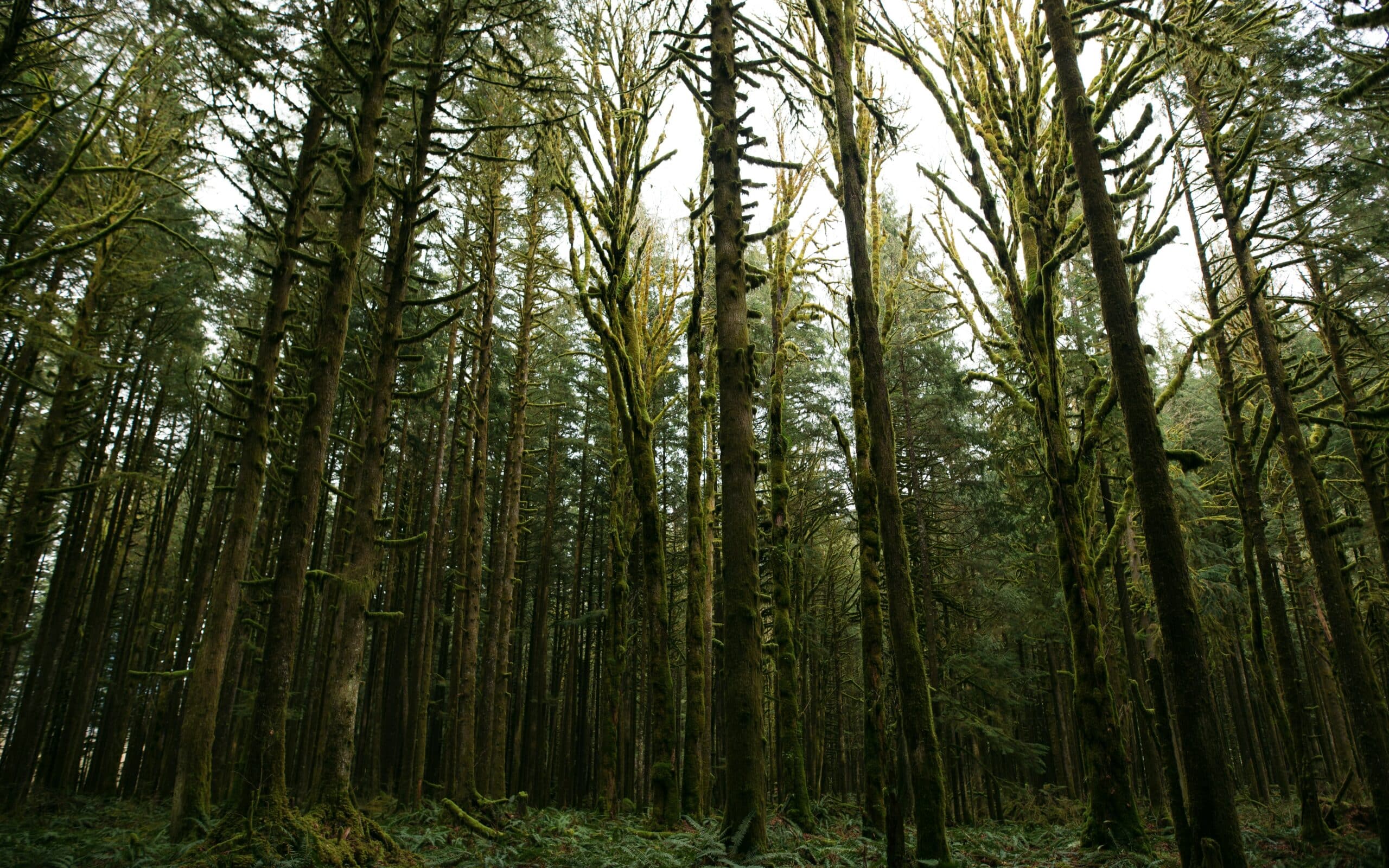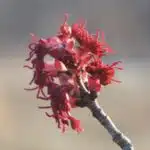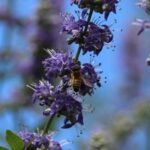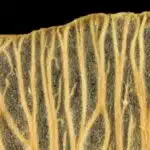The Paperbark Maple tree is a beautiful addition to any garden and can bring joy to its owners for many years. Take the case of the Smith family, for example, who were delighted to watch their Paperbark Maple grow from a small sapling into a strong and healthy tree that provided shade and beauty in their backyard. This article will provide all the information needed to successfully grow and care for a Paperbark Maple tree.
As an expert in botany and gardening, I’ve seen firsthand how growing a Paperbark Maple can be rewarding and fulfilling. From selecting the right spot in your garden to providing proper maintenance, there are several steps that must be taken in order to ensure the success of this special tree. With that being said, let’s take a look at what it takes to properly grow and care for this beautiful species.
The Paperbark Maple is native to China but can also be found in other parts of Asia as well as Europe. It’s easily recognizable by its striking bark, which sheds each year revealing new copper-colored layers underneath. In addition to its unique bark, the tree produces yellowish-green flowers during early spring followed by clusters of winged samaras (seeds) during late summer or fall. With proper care and attention, this gorgeous maple can become an integral part of your landscape design!
What Is A Paperbark Maple Tree?
The Paperbark Maple is a unique and beautiful tree that can provide a stunning focal point in any garden. It’s distinctive bark peels away in paper-thin layers, revealing an inner bark of cinnamon-brown color. It also has lovely three-fingered leaves that turn yellow and orange in the fall. But what else should you know about this gorgeous tree? Let’s take a closer look at how to care for and grow a Paperbark Maple.
First, it’s important to note that the Paperbark Maple is native to China and prefers well-draining soil with plenty of organic matter. It requires full sun or partial shade and needs regular watering during its first couple of years while it establishes itself. Once mature, however, the Paperbark Maple only requires occasional deep waterings during periods of drought. This tree also tends to prefer slightly acidic soil, so if your soil is not naturally acidic, then you’ll need to add some acidifying fertilizer once or twice a year.
When it comes to pruning, the Paperbark Maple does well with light shaping pruning during late winter or early spring before new growth appears. If pruned too hard during this time period, however, it can be detrimental to the health of the tree as it will not have enough time to recover from the shock before going into summer dormancy. Keep in mind that this tree doesn’t respond well to heavy pruning as it may never recover from such harsh treatment.
With proper care and attention, the Paperbark Maple can be enjoyed for many years! Its unique bark coupled with its bright colors makes it an excellent choice for any garden enthusiast looking for something special and unique.
Where To Plant A Paperbark Maple Tree
The paperbark maple tree is a beautiful ornamental that is both striking and low maintenance. But, before planting one in your garden, it’s important to understand where the best location for it will be. To determine this, let’s look at what makes paperbark maple trees so special.
First of all, the paperbark maple tree has a unique bark that stands out from other species. Its exfoliating bark can range in colors from light brown to reddish-brown and offers multi-seasonal interest due to its showy peeling. It also grows slowly with an upright or oval form and reaches heights of 20-30 feet tall and 15-25 feet wide at maturity.
In terms of location, the paperbark maple thrives in sunny spots with partial shade and prefers moist soil conditions. It does not do well in windy areas or locations that are prone to drought as this can cause leaf scorch or death of branches. Furthermore, if planted too close to buildings or driveways, its large roots may cause damage to foundation walls or pavement surfaces. Therefore, when deciding on a spot for your paperbark maple tree, make sure it’s away from any structures while still providing some protection from strong winds and full sun exposure.
Soil Requirements For A Paperbark Maple Tree
When planting a paperbark maple tree, it is important to consider the soil requirements. The soil should be moist and well-draining, with a slightly acidic pH level of 6.0 to 7.5. Here are 4 tips to help you provide the best soil conditions for your paperbark maple tree:
Amend the soil with organic matter like compost or peat moss before planting. This will improve the drainage of the soil and add essential nutrients.
Test your soil’s pH level annually and adjust as needed by adding sulfur or lime if you find it too acidic or alkaline, respectively.
Spread a 2-inch layer of mulch around the base of the tree each year to retain moisture and discourage weed growth.
Water regularly during dry periods to ensure that the roots are receiving adequate moisture throughout their growing season.
By following these steps, gardeners can create an ideal environment for their paperbark maple trees to thrive in. Being attentive to your tree’s needs can ensure that it reaches its full potential. Now that we’ve discussed proper soil requirements, let’s move onto sunlight needs for this species of maple tree…
Sunlight Requirements For A Paperbark Maple Tree
How much sunlight does a paperbark maple tree need to grow? This is an important question for any gardener considering adding this majestic species to their garden. The paperbark maple tree, Acer griseum, is known for its unique bark and striking foliage, so it’s no wonder why it has become a popular choice among gardeners. To ensure that your paperbark maple tree grows healthy and strong, here’s what you need to know about its sunlight requirements:
• Full Sun: The paperbark maple tree prefers full sun exposure of at least 6 hours per day. • Partial Shade: If full sun is not available, the paperbark maple tree can tolerate partial shade with some protection from high afternoon sun. • Protection from Wind: Your paperbark maple must be protected from strong winds as this can damage its leaves and branches. • Avoid Overhead Wires: Plant your paperbark maple away from overhead wires as this can pose a risk of electrocution if left too close. • Find the Right Spot: Choose an area in your garden that receives adequate sun exposure while also providing enough protection from wind and overhead wires.
A specialist in botany and gardening will tell you that these are key elements when considering growing a paperbark maple tree in your garden. The proper amount of sunlight will help ensure that your Acer griseum grows healthy and strong with beautiful foliage all year round! With the right spot chosen, it’s time to move on to the next step – watering your paperbark maple tree…
Watering A Paperbark Maple Tree
Watering a Paperbark Maple Tree is essential for its health and growth. It prefers moist soil, but doesn’t like soggy or wet soil. Here are some tips to help you keep your paperbark maple tree thriving:
• Water the tree deeply, about one inch per week, more during dry periods • Avoid overhead watering which could lead to foliage diseases • Check the soil moisture with your finger two inches below the surface before watering • Make sure water runs away from the trunk of the tree to avoid root rot
To help ensure you’re providing proper hydration for your paperbark maple tree, consider installing an irrigation system or setting up an automated sprinkler timer. This will ensure that it gets consistent and adequate water at all times in different seasons. Additionally, mulching around the base of the tree helps to retain moisture and reduce weeds.
Proper watering is essential for a healthy paperbark maple tree; however, too much water can be just as damaging as not enough. Establishing a routine watering schedule and monitoring soil moisture is key to keeping your tree healthy and thriving in any climate. With these strategies in place, you’ll be well on your way towards successfully growing a beautiful paperbark maple tree. Now let’s take a look at pruning this special species of Acer griseum…
Pruning A Paperbark Maple Tree
The paperbark maple tree (Acer griseum) is a stunning and hardy specimen, with its slender trunk and cinnamon-red bark. Its beauty doesn’t just end there; the shapely leaves are an added bonus that make this tree a favourite among gardeners. Pruning this tree will not only help to keep it looking its best, but it is also essential for maintaining its health. In this article we’ll explore how to prune your paperbark maple tree properly.
First of all, it’s important to realise that pruning should be done primarily for aesthetic reasons or to remove dead or diseased branches; the tree does not require extensive pruning in order to thrive. When you do decide to prune, use sharp, clean shears and make sure that you remove no more than one-third of the foliage at any one time. This will ensure that the plant can recover quickly and continue thriving. Avoid cutting into the trunk of the tree as this will cause damage and leave it vulnerable to disease.
Finally, consider removing any crossing branches or those growing too close together as these can put additional strain on the plant and reduce airflow through its canopy – both of which can have a negative effect on growth or even kill off parts of the tree if left unchecked. With regular attention and proper care, your paperbark maple tree will be an attractive addition to your garden for years to come! As with any other plant in your garden, fertilization is also important for providing nutrients necessary for healthy growth – let’s take a look at how you can give your paperbark maple exactly what it needs.
Fertilizing A Paperbark Maple Tree
As the sun rays cascade over its delicate foliage, the paperbark maple tree is a sight to behold! With its unique cinnamon-colored bark, it’s sure to be an eye-catching addition to any landscape. But for the paperbark maple tree to truly thrive and reach its full potential, proper fertilization is essential.
Fertilizing your paperbark maple tree should begin in early spring as new growth begins. A slow-release fertilizer that contains both nitrogen and phosphorus is best; however, a balanced 10-10-10 formula will also work well. You can apply the fertilizer directly to the soil or mix it into the soil before planting. Additionally, you may want to spread a layer of organic mulch around the base of the tree to help retain moisture and prevent weeds from growing.
It’s important not to overfertilize your paperbark maple tree because too much fertilizer can actually do more harm than good by burning the roots or causing leaf discoloration and poor growth. It’s best to follow label instructions for application rates and frequency; usually, one application per year is sufficient. If you prefer organic fertilizers, make sure they are specifically made for trees and shrubs rather than flowers or vegetables.
With regular fertilization in place, your paperbark maple tree will have everything it needs for healthy growth – now all that’s left are pest management strategies!
Common Pests And Diseases Of A Paperbark Maple Tree
It is commonly held that a strong and healthy tree is not only determined by its care, but also by its resistance to pests and diseases. This theory holds true for the paperbark maple tree (Acer griseum). As beautiful as it is, it is still vulnerable to certain common pests and diseases. In this section, we will discuss the pests and diseases that can affect the paperbark maple and how best to prevent them.
Pests such as scale insects, mealybugs and aphids can cause damage to the paperbark maple leaves, bark, twigs and branches. To prevent these pests from damaging your tree, regular inspections of the bark should be conducted regularly. If any infestations are found, they should be treated right away with an insecticidal soap or horticultural oil. It’s also important to keep the area around your tree free of weeds which can attract unwanted pests.
Diseases such as verticillium wilt, leaf spot disease and anthracnose can also affect the paperbark maple. To prevent these diseases from taking hold in your tree you should ensure that it has good air circulation around it. Additionally, mulching around your tree will help reduce moisture levels which pathogens thrive on. Pruning back any dead or diseased branches can also help reduce the spread of infection throughout the canopy of your tree.
By following these steps you can greatly reduce the risks posed by common pests and diseases for your paperbark maple tree, ensuring that it remains healthy for many years to come !
Propagating A Paperbark Maple Tree
It is a widely held belief that propagating paperbark maple trees can be difficult. However, with proper care and attention, it can be done successfully. As a specialist in botany and gardening, I have found that there are several ways to propagate these trees. Firstly, you can use stem cuttings taken from an existing tree; this is done by cutting off a stem with two to three sets of leaves at the top and rooting hormone applied to the base of the cutting. Secondly, you can use layering – where a branch or stem is bent down to the ground and covered with soil to encourage root growth. Finally, air-layering involves wrapping a moistened sphagnum moss around a branch or stem in order to encourage root growth.
In order to get the best results when propagating paperbark maple trees, it’s important to understand the environment they need in order to thrive. This includes providing them with partial shade as well as well-draining soil that contains plenty of organic matter. Additionally, make sure you keep the soil slightly moist but not soggy for best results.
With correct technique and adequate care, propagating paperbark maple trees can be an incredibly rewarding experience for any gardener looking for something special in their garden. Now that we’ve discussed propagation techniques, let’s move on to winter care of paperbark maple trees which will ensure their health and longevity…
Winter Care Of A Paperbark Maple Tree
Winter care of a paperbark maple tree is an important part of keeping this beautiful species healthy and thriving. But what should you do to ensure your paperbark maple tree survives the winter? As a botanist and gardener, I’m here to provide some insight into the best practices for winter care of paperbark maple trees.
First and foremost, it’s essential that you provide protection for your tree during cold winters. The easiest way to do this is by using burlap or other protective fabric. Wrap the burlap around the trunk and branches of your tree to create a shield from wind, snow, and ice. You can also add mulch around the base of the tree for added insulation.
Another important part of winter care for paperbark maples is pruning. Pruning is necessary in order to maintain the health and shape of your tree as well as remove any dead or diseased branches that could lead to further problems down the line. Prune away any broken, crossed, or rubbing branches, as well as any dead twigs or limbs that are no longer alive. Doing so will help promote strong growth in spring when temperatures begin to warm up again.
Finally, additional watering may be necessary during prolonged droughts or dry spells over winter months. Paperbark maples require plenty of water throughout their life cycle so be sure to keep an eye on soil moisture levels and give them a good drink if needed! With proper winter care, your paperbark maple can look forward to many years ahead growing strong and healthy with beautiful foliage each year!
Benefits Of Growing A Paperbark Maple Tree
The paperbark maple tree is a sight to behold and a boon to any garden. Its gorgeous, vibrant foliage and striking bark will bring an unparalleled level of beauty to any landscape. Not only is it visually stunning, but its benefits go far beyond looks. Here are just a few of the amazing advantages of growing this beautiful specimen:
Low maintenance: The paperbark maple tree is remarkably easy to care for, requiring minimal pruning and fertilizing throughout the year. This makes it ideal for beginner gardeners or those who don’t have much time on their hands.
Adaptability: This incredible species can easily adapt to different soils and climates, making it suitable for almost any environment. It can even withstand temperatures as low as -30 degrees Fahrenheit!
Long-lasting beauty: The paperbark maple’s striking bark will stay intact for years and years, providing you with a vibrant showpiece that won’t fade over time. This makes it perfect for those looking for an enduring focal point in their garden design.
For botany and gardening enthusiasts alike, the paperbark maple tree provides endless opportunities for enjoyment and appreciation. Its low-maintenance needs, versatile climate requirements, and long-lasting beauty make it one of the most rewarding plants out there—so why not give it a go? With just a bit of knowledge and dedication, you could be the proud owner of your very own thriving specimen in no time!
Tips For Growing A Healthy Paperbark Maple Tree
When it comes to growing a healthy paperbark maple tree, there are some tips that can help ensure success. This tree is known for its beautiful bark and attractive spring foliage, and with proper care, it can thrive in gardens for many years. Here, we’ll discuss the best strategies for creating an ideal environment for your paperbark maple tree.
First and foremost, it’s important to provide this tree with plenty of sunlight. Paperbark maple trees require at least four hours of full sun each day in order to flourish. Additionally, they should be planted in well-drained soil that is slightly acidic or neutral; soil that has a pH between 5.5 and 7.0 is ideal. It’s also important to ensure that the soil stays consistently moist but not wet; too much water can be damaging to the roots of these trees.
Fertilizing your paperbark maple tree regularly is essential for its health and growth. Use a balanced fertilizer formulated specifically for trees and shrubs to give your paperbark maple the nutrients it needs throughout the growing season. Pruning should also be done periodically to remove dead or diseased branches and promote healthy new growth; however, bear in mind that pruning should only occur during the winter months when the tree is dormant so as not to injure any buds or shoots during active growth periods.
By following these tips for growing a healthy paperbark maple tree, you can create an environment that will allow this beautiful species to reach its full potential in your garden or landscape setting! With thoughtful care, you’ll enjoy its spectacular beauty year after year – now let’s look at design ideas for incorporating this stunning specimen into your outdoor space!
Design Ideas For A Paperbark Maple Tree
The paperbark maple tree is an exotic, eye-catching addition to any landscape. Its papery bark, brilliant fall colors and tiered branches provide a dramatic backdrop to gardens and outdoor spaces. With careful design and planting, this distinctive tree can become the centerpiece of an outdoor oasis.
When it comes to designing with a paperbark maple tree, you have plenty of options. You can bring out its unique features by highlighting them against a contrasting backdrop or by pairing it with other trees and shrubs. Whether you’re looking for a focal point or something more subtle, the paperbark maple has plenty of potential.
For a striking display, consider planting your paperbark maple near evergreens or hedges to create contrast in texture and color. Placed in front of a stone wall or fence, its tiered branches will form an attractive silhouette against the flat surface. The tree also looks great when planted in groupings with other specimens, such as Japanese maples or dogwoods for a multidimensional look. Place it among evergreen shrubs for added greenery that won’t clash with the bold reds and oranges of fall foliage. No matter how you choose to arrange your paperbark maple tree, it’s sure to create an unforgettable focal point for your garden or outdoor space.
Troubleshooting Problems With A Paperbark Maple Tree
Troubleshooting problems with a paperbark maple tree is important for any gardener who wishes to ensure that its beautiful foliage stays healthy and vibrant. As with any other tree, the paperbark maple can suffer from disease or environmental stresses that can affect its growth and vitality. Thankfully, there are some simple steps we can take to help prevent or mitigate these issues.
First of all, it’s always worthwhile to understand the conditions in which the paperbark maple will thrive. This species does best in full sun but may experience leaf scorch if exposed to too much direct sunlight during hot summer months. It also benefits from having moist soil and sufficient water throughout the growing season. Regular fertilization as well as mulching around the base of the tree can also help improve its overall health and vigor.
If you do find yourself dealing with a diseased or stressed paperbark maple, there are certain treatments available that can help restore it to its former glory. Pruning dead or damaged branches should be done regularly to promote healthier new growth while applying an appropriate fungicide to infected areas can stop fungi from spreading further. In extreme cases, systemic insecticides may be necessary if pests have become an issue. With proper care and maintenance, your paperbark maple should remain healthy for many years to come!
No matter how careful you are when caring for your paperbark maple, it’s possible that environmental factors outside of your control could lead to a decline in its health over time. If this happens, then exploring alternatives such as red maples or sugar maples might be worth considering since they share similar characteristics but require less maintenance overall.
Alternatives To The Paperbark Maple Tree
A profusion of color, texture and grace – that’s what the paperbark maple tree offers to gardens everywhere. But if it’s not right for your landscape, you don’t have to miss out on all its beauty. Here are some alternative trees that offer similar features:
Stewartia pseudocamellia – This small deciduous tree has attractive dark green leaves with silvery undersides, giving it a two-toned effect. It also produces white flowers in summer and peeling bark in winter.
Amur Maple – This is a good choice if you want something smaller than the paperbark maple, as it only grows up to 20 feet tall and wide. Its leaves turn an attractive yellow in the fall and its bark peels off in thin strips.
Trident Maple – The trident maple is an excellent substitute for the paperbark maple because it produces similar bark but can handle more sun than the paperbark variety. It also has bright red foliage in autumn and grows up to 25 feet tall and wide.
Chinese Dogwood – This flowering tree may not be as showy as its flowering cherry cousins, but it does produce beautiful white blooms in spring that are followed by pink fruit in fall and peeling bark year round. It’s a great option for those who want a smaller specimen tree that can fit into tight spaces.
No matter what type of maple tree you choose, proper care is essential for long term health and beauty! Ensure your new tree gets plenty of water during dry spells, fertilize it every spring with a slow-release fertilizer formulated for maples and prune any dead or damaged branches throughout the year to encourage healthy growth habits. With these steps, your new addition to the garden will thrive!
Frequently Asked Questions
How Tall Does A Paperbark Maple Tree Grow?
The Paperbark Maple tree is an exotic species that is sure to add a touch of wonder to any garden. Its beautiful, papery bark and dainty leaves create an aesthetic that can make any garden feel more special. But how tall will this majestic species grow?
Fortunately, the Paperbark Maple doesn’t get too large. It can reach heights of up to 25 feet when mature, though it usually stays around 20 feet tall in most cases. It has a rather slow growth rate and can take up to 15 years for the tree to reach its full height. The Paperbark Maple also has a wide canopy, typically spreading out between 10 and 15 feet from its trunk.
To ensure your Paperbark Maple grows happily and healthily, it’s important to provide it with plenty of sunlight and well-drained soil. Watering regularly is also key – don’t let the soil dry out completely! Pruning should be done sparingly as the tree’s natural shape is part of its charm; however, if you do prune, make sure not to cut back too much at once so as not to damage the tree. With proper care and attention, your Paperbark Maple should be able to thrive in your garden for years to come!
What Is The Best Type Of Fertilizer For A Paperbark Maple Tree?
Paperbark Maple trees, also known as Acer Griseum, are a medium-sized deciduous tree growing up to 25 feet tall. They are native to China and prefer moist, well-drained soils with 6 to 8 hours of sun per day. When it comes to fertilizing your Paperbark Maple tree, there are several options that can help promote healthy growth and keep the tree looking its best.
The most important factor when choosing fertilizer is selecting one that contains the right amount of nitrogen, phosphorus, and potassium (N-P-K). An ideal mix for a Paperbark Maple Tree is an 8-4-4 ratio (8% Nitrogen – 4% Phosphorus – 4% Potassium). Additionally, soil pH should be tested before fertilization as this will help determine how much fertilizer should be added and when.
When it comes to application methods for your Paperbark Maple Tree, there are three main types: granular, liquid, and slow release. Granular fertilizer is easy to apply but needs to be applied multiple times throughout the season; while liquid fertilizer can provide quick results but may need more frequent applications. Slow release fertilizer offers convenience as it only needs to be applied once during the growing season but may take longer for the nutrients to become available to the tree.
For those looking for a more environmentally friendly option, compost or organic matter such as manure can also be used in place of traditional fertilizers. Compost or organic matter helps improve soil quality over time by providing essential nutrients and improving drainage. This helps ensure that your Paperbark Maple Tree has access to all of the necessary minerals required for optimal growth and health.
Is A Paperbark Maple Tree Evergreen Or Deciduous?
Acer griseum, or the paperbark maple tree, is a deciduous tree native to northern China and Korea. It’s an attractive ornamental with flaking cinnamon-colored bark, giving it its distinctive name. It’s also an excellent choice for a variety of landscaping projects, from providing shade to making a statement in any garden. But before you purchase one, there’s an important question to consider: Is this tree evergreen or deciduous?
As a specialist in botany and gardening, I’m here to tell you that the paperbark maple is indeed deciduous. This means it will lose its leaves seasonally during wintertime and regrow them in the spring. While this may sound like bad news, it actually helps ensure optimal growth since the tree will not be weighed down by heavy foliage during colder months. Plus, it provides us with a spectacular show of color when fall comes around!
The paperbark maple is relatively easy to care for once established in the landscape. All it needs is plenty of sunlight, regular watering (especially during droughts), and good soil drainage. Fertilizer isn’t always necessary but can help promote healthy growth if used correctly; organic compost or slow-release granular fertilizer are both good options for this particular species. With proper care and attention, your paperbark maple should give you years of enjoyment!
How Long Does It Take For A Paperbark Maple Tree To Reach Maturity?
The Paperbark Maple tree (Acer griseum) is a unique and beautiful addition to any garden, thanks to its distinctive peeling bark which reveals layers of cinnamon-brown and gray. It’s an ideal choice for smaller gardens and a popular ornamental species. But how long does it take for the tree to reach maturity?
As with any other tree species, the time it takes for a Paperbark Maple tree to mature largely depends on the environment in which it’s planted. Generally, you can expect this slow-growing tree to reach full maturity between 15 and 20 years. Here are some key factors that will influence the growth rate of your Paperbark Maple:
• Climate – This deciduous species prefers cooler climates and can suffer in hot or humid areas. Planting your maple in an area that provides enough shade during summer months will help it thrive.
• Soil Quality – The ideal soil should be moist but well-drained, rich in organic matter and slightly acidic (PH 6 or below). Amending the soil accordingly or planting your maple in raised beds may be necessary if your soil doesn’t meet these requirements.
• Watering – Proper watering is essential for young trees as they establish their root systems; however, too much water can cause root rot so be sure not to over-water. Once established, only water during prolonged dry spells.
• Fertilization – Fertilizing your Paperbark Maple every spring with a balanced fertilizer will help promote healthy growth but avoid over-fertilizing as this could damage the roots or even kill the tree.
• Pruning – Pruning should not be done unless absolutely necessary since it detracts from the beauty of this maple’s naturally flaking bark. If pruning is required, always use sharp tools and make sure to sterilize them before use to prevent infection or disease spread among branches.
With proper care and attention, you’ll soon see your Paperbark Maple reaching its full potential within 15-20 years! Although maturation takes time, once established you’ll enjoy many years of beauty from this one-of-a-kind specimen – making all those hours spent caring for it worth every minute!
How Often Should A Paperbark Maple Tree Be Pruned?
As with any tree, proper pruning is an essential part of caring for a paperbark maple. Pruning helps maintain the tree’s natural shape and prevents overcrowding that can lead to disease and pest infestation. But how often should you prune your paperbark maple? Let’s take a look.
To start off, it’s important to remember that like with many things in life, timing is everything when it comes to pruning your paperbark maple. Pruning too early or late can harm the long-term health of the tree, so you want to make sure you get the timing just right. Like a gardener cutting the perfect rose bush, timing is key for achieving a healthy and vibrant paperbark maple.
For most people, annual pruning should be enough to keep your paperbark maple looking its best. You may have heard that more frequent pruning results in stronger growth, but this isn’t necessarily true; frequent pruning can actually weaken the tree and decrease its lifespan if done incorrectly.
In short, moderate annual pruning should be adequate for most paperbark maples – no need to go overboard! Be sure to properly research how and when to trim your specific variety of tree before proceeding with any pruning work; done correctly, it will ensure your tree maintains its beautiful form for years to come.
Conclusion
A Paperbark Maple Tree is a beautiful addition to any landscape. The stunning exfoliating bark is an eye-catching feature and its attractive leaves make it a great choice for any garden. With the proper care, these trees can reach heights of up to 20 feet and live for many years to come.
The best way to ensure healthy growth of your Paperbark Maple Tree is by providing it with ample water and fertilizer. Fertilize twice per year with a slow-release fertilizer, taking into account the type of soil in which the tree grows. Prune annually in early spring to remove dead or broken branches and promote healthy growth.
All in all, with the right care and attention, your Paperbark Maple Tree will thrive in your landscape for many years to come. Its magnificent exfoliating bark and attractive foliage are sure to make it a standout feature in any garden. With its moderate growth rate and long life span, this tree will be an asset to any landscape for decades to come.





























